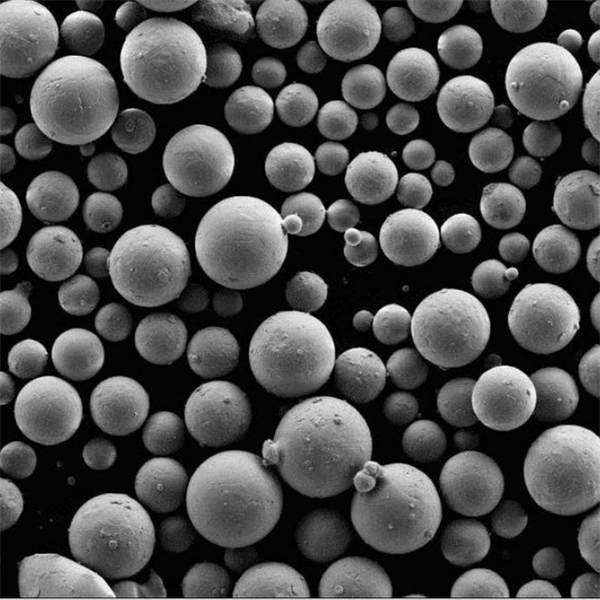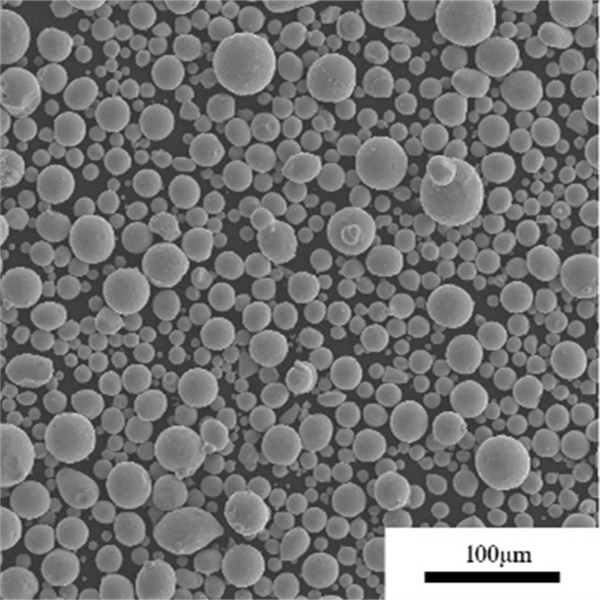FeSiCr poeder voor netwerksysteem
Inhoudsopgave
In de steeds veranderende wereld van netwerksystemen is een betrouwbare stroomvoorziening van het grootste belang. Datacenters, communicatieknooppunten en kritieke infrastructuur zijn allemaal afhankelijk van een ononderbroken stroomtoevoer om te kunnen functioneren. Dit is waar FeSiCr, een krachtige legering bestaande uit ijzer (Fe), silicium (Si) en chroom (Cr), zijn intrede doet. Maar wat is nu precies FeSiCr-poederen hoe draagt het bij aan de sterkte en veerkracht van een netwerksysteem?
FeSiCr begrijpen: Een krachtcentrale voor materialen
FeSiCr-poeder is een metaallegering die zorgvuldig is vervaardigd door ijzer, silicium en chroom in specifieke verhoudingen te combineren. Dit krachtige mengsel geeft het poeder unieke eigenschappen, waardoor het een veelgevraagd materiaal is in verschillende toepassingen, met name op het gebied van netwerksystemen.

Samenstelling, eigenschappen en kenmerken van FeSiCr-poeders
| Eigendom | Beschrijving |
|---|---|
| Samenstelling | FeSiCr-poeder bestaat gewoonlijk uit 70-80% ijzer, 1-5% silicium en 15-20% chroom. Variaties in deze percentages kunnen de eigenschappen van het poeder aanpassen aan specifieke behoeften. |
| Hoge sterkte | FeSiCr heeft een indrukwekkende trek- en vloeigrens, waardoor het bestand is tegen aanzienlijke mechanische spanning zonder te vervormen. Dit vertaalt zich in robuuste netwerkcomponenten die bestand zijn tegen zware bedrijfsomstandigheden. |
| Uitstekende weerstand tegen oxidatie | FeSiCr heeft een superieure weerstand tegen oxidatie bij hoge temperaturen. Deze eigenschap is cruciaal in netwerksystemen, waar componenten vaak warmte genereren, wat kan leiden tot corrosie en prestatievermindering. |
| Verbeterde slijtvastheid | De aanwezigheid van chroom in FeSiCr draagt bij tot een uitzonderlijke slijtvastheid. Dit is met name gunstig voor netwerkcomponenten die onderhevig zijn aan wrijving en beweging en zorgt voor een langere levensduur van de componenten. |
| Goed elektrisch geleidingsvermogen | Hoewel het niet zijn primaire sterkte is, heeft FeSiCr poeder een adequaat elektrisch geleidingsvermogen, voldoende voor veel netwerksysteemtoepassingen. |
| Magnetische eigenschappen | Afhankelijk van de specifieke samenstelling kan FeSiCr ferromagnetisch of paramagnetisch gedrag vertonen. Deze eigenschap kan op maat gemaakt worden voor specifieke netwerkcomponenten. |
Toepassingen van FeSiCr-poeder in netwerksystemen
FeSiCr-poeder vindt zijn plaats in een groot aantal netwerksysteemcomponenten, die elk profiteren van de unieke eigenschappen. Hier zijn enkele prominente voorbeelden:
| Sollicitatie | Voordelen van FeSiCr-poeder |
|---|---|
| Stroomrails en connectoren | De hoge sterkte en slijtvastheid van FeSiCr maken het ideaal voor stroomrails en connectoren, cruciale onderdelen voor de distributie van elektrische stroom binnen netwerksystemen. Deze onderdelen moeten aanzienlijke stromen aankunnen zonder aan slijtage onderhevig te zijn. |
| Koellichamen en afvoercomponenten | Door zijn uitstekende oxidatieweerstand is FeSiCr-poeder waardevol in koellichamen en dissipatiecomponenten. De weerstand van FeSiCr tegen hoge temperaturen zorgt voor een lange levensduur van de componenten en een efficiënte warmteafvoer. |
| EMI/RFI afscherming | De magnetische eigenschappen van FeSiCr-poeder kunnen worden gebruikt voor afscherming tegen elektromagnetische interferentie (EMI) en radiofrequentie-interferentie (RFI). Dit beschermt gevoelige netwerkapparatuur tegen elektromagnetische storingen, waardoor de gegevensintegriteit en systeemfunctionaliteit behouden blijft. |
| Toepassingen voor Additive Manufacturing (AM) | FeSiCr-poeder schittert op het gebied van additieve productietechnieken (AM) zoals 3D-printen. Hierdoor kunnen netwerkcomponenten met complexe geometrieën op maat worden gemaakt, wat meer ontwerpflexibiliteit biedt en de prestaties van het netwerksysteem mogelijk optimaliseert. |
Specificaties, maten en kwaliteiten van FeSiCr-poeders
FeSiCr-poeders zijn er in verschillende specificaties, groottes en kwaliteiten om te voldoen aan verschillende vereisten voor netwerksystemen. Hier volgt een overzicht van enkele belangrijke factoren om rekening mee te houden:
| Factor | Beschrijving |
|---|---|
| Deeltjesgrootte | De deeltjesgrootte van FeSiCr-poeder varieert gewoonlijk van 10 tot 150 micron, wat de stroombaarheid van het materiaal en de uiteindelijke eigenschappen van het onderdeel beïnvloedt. Fijnere poeders bieden een betere oppervlakteafwerking, maar vereisen mogelijk specifieke verwerkingstechnieken. |
| Vloeibaarheid | De vloeibaarheid van het poeder bepaalt het verwerkingsgemak en de geschiktheid voor verschillende AM- of metaalspuitgiettechnieken (MIM). Een hoge vloeibaarheid zorgt voor een soepele verwerking en een consistente dichtheid van de componenten. |
| Schijnbare dichtheid | Deze parameter verwijst naar het gewicht van het poeder per volume-eenheid. Het beïnvloedt het materiaalgebruik en de verpakkingsefficiëntie tijdens het productieproces. |
| Cijfers | Er bestaan verschillende soorten FeSiCr-poeder, met kleine variaties in de samenstelling voor specifieke toepassingen. Sommige kwaliteiten geven bijvoorbeeld voorrang aan slijtvastheid, terwijl andere zich richten op een betere elektrische geleiding. |
Leveranciers en prijzen van FeSiCr-poeders
Verschillende toonaangevende metaalpoederleveranciers bieden FeSiCr-poeder aan in verschillende specificaties. Hier volgt een blik op enkele prominente spelers:
Prijzen van FeSiCr-poeders
Helaas is het niet eenvoudig om een precieze prijs voor FeSiCr-poeder te bepalen vanwege verschillende factoren. Dit is wat de prijs beïnvloedt:
- Poederspecificaties: Deeltjesgrootte, vloeibaarheid en kwaliteit spelen allemaal een rol. Fijnere poeders met superieure vloeibaarheid en specifieke sorteringskenmerken vragen doorgaans een hogere prijs.
- Bestelhoeveelheid: Bulkaankopen profiteren meestal van schaalvoordelen, wat leidt tot lagere kosten per eenheid in vergelijking met kleinere bestellingen.
- Marktschommelingen: Wereldwijde metaalprijzen en de dynamiek van de toeleveringsketen kunnen de kosten van grondstoffen beïnvloeden, wat uiteindelijk de prijs van FeSiCr-poeder beïnvloedt.
Een blik op specifieke FeSiCr metaalpoeders
Hier volgt een overzicht van tien prominente FeSiCr metaalpoeders, met de belangrijkste kenmerken en potentiële toepassingen in netwerksystemen:
| Metaalpoeder | Beschrijving | Netwerksysteemtoepassingen |
|---|---|---|
| AMPCOR 9740 (Höganäs AB) | Dit FeSiCr-poeder heeft een uitgebalanceerde samenstelling (75% Fe, 4% Si, 21% Cr) met een uitstekende slijtvastheid en hoge sterkte. | Ideaal voor rails, connectoren en andere componenten die een uitzonderlijke mechanische duurzaamheid vereisen. |
| Höganäs AMPCOR 9741 (Höganäs AB) | Deze variant heeft een iets hoger chroomgehalte (73% Fe, 3% Si, 24% Cr) in vergelijking met AMPCOR 9740, wat de slijtvastheid verder verbetert. | Bijzonder geschikt voor toepassingen met veel wrijving en slijtage, zoals glijdende contacten en bewegende onderdelen. |
| Timmerman Incus 316L (Producten van het poeder van de timmermanadditieven) | Dit FeSiCr poeder heeft een samenstelling vergelijkbaar met 316L roestvrij staal (70% Fe, 1% Si, 19% Cr, met toevoegingen van Ni en Mo). Het heeft een uitstekende corrosiebestendigheid en biocompatibiliteit. | Hoewel dit niet specifiek is voor netwerksystemen, zou dit poeder waardevol kunnen zijn voor netwerkcomponenten die mogelijk worden blootgesteld aan ruwe omgevingen of die een bepaalde mate van biocompatibiliteit vereisen. |
| AM BASF AMثير (AMBASF) (BASF) | Dit FeSiCr-poeder van BASF heeft een unieke naam ("AMثير" betekent "AM Power" in het Arabisch) en heeft een hoge sterkte naast een goede vloeibaarheid. | Zeer geschikt voor AM-toepassingen in netwerksystemen vanwege het verwerkingsgemak en de sterke mechanische eigenschappen. |
| SLM-oplossingen FeSiCr15 (SLM Oplossingen) | Dit aanbod van SLM Solutions geeft voorrang aan een evenwicht tussen sterkte en elektrisch geleidingsvermogen (75% Fe, 3% Si, 17% Cr, met toevoegingen van Mn). | Een potentiële keuze voor netwerkcomponenten die zowel structurele integriteit als adequate elektrische prestaties vereisen. |
| LPW FeCrSi (LPW Technologie) | Het FeCrSi poeder van LPW Technology biedt een standaardsamenstelling (75% Fe, 4% Si, 21% Cr) met goede algemene eigenschappen. | Een veelzijdige optie voor diverse netwerksysteemtoepassingen waar een balans van sterkte, slijtvastheid en oxidatiebestendigheid gewenst is. |
| EOS M 290 (EOS GmbH) | Dit FeSiCr-poeder van EOS heeft een iets lager chroomgehalte (73% Fe, 3% Si, 19% Cr) dan sommige concurrenten. Het biedt echter een uitstekende verwerkbaarheid voor AM-technieken. | Een goede keuze voor onderdelen van netwerksystemen die zeer nauwkeurig 3D geprint moeten worden en waarbij productiegemak prioriteit heeft. |
| AMBIT FeSiCr (AMBIT-poeder) | Dit FeSiCr-poeder van AMBIT Powder focust op een evenwichtige samenstelling (73% Fe, 3,5% Si, 19,5% Cr) met goede algemene eigenschappen voor diverse toepassingen. | Een andere veelzijdige optie voor verschillende netwerksysteemcomponenten waar een balans van functionaliteiten gewenst is. |
| Proto Labs FeSiCr (Proto Labs) | Proto Labs biedt een standaard FeSiCr poeder met een typische samenstelling (75% Fe, 4% Si, 21% Cr). | Een direct beschikbare optie voor het maken van prototypes van netwerksysteemcomponenten met behulp van AM-technieken. |
| ExOne FeSiCr (ExOne) | ExOne's FeSiCr poeder geeft voorrang aan printbaarheid voor binder jetting AM technieken. Details over de specifieke samenstelling zijn niet direct beschikbaar. | Mogelijk goed geschikt voor netwerksysteemcomponenten die zijn vervaardigd via binder jetting AM, gezien de focus op bedrukbaarheid. |
Voordelen en nadelen van FeSiCr-poeders voor netwerksystemen
FeSiCr-poeder biedt een overtuigend voorstel voor netwerksysteemtoepassingen, maar het is essentieel om de sterke en zwakke punten ervan te begrijpen om weloverwogen beslissingen te kunnen nemen.
Voordelen:
- Uitzonderlijke sterkte en slijtvastheid: FeSiCr blinkt uit op deze gebieden, waardoor het ideaal is voor componenten zoals stroomrails en connectoren die aanzienlijke elektrische stromen en potentiële slijtage verwerken.
- Superieure weerstand tegen oxidatie: Netwerkapparatuur genereert vaak warmte en de weerstand van FeSiCr tegen oxidatie bij hoge temperaturen zorgt voor een lange levensduur van componenten en efficiënte warmteafvoer in koellichamen en afvoercomponenten.
- Verbeterde EMI/RFI afscherming: De magnetische eigenschappen van FeSiCr kunnen worden benut om een effectieve afscherming tegen elektromagnetische en radiofrequente interferentie te creëren, zodat gevoelige netwerkapparatuur wordt beschermd tegen storende elektromagnetische golven.
- Veelzijdigheid in Additive Manufacturing: FeSiCr-poeder blinkt uit in AM-technieken, waardoor ingewikkelde netwerkcomponenten met complexe geometrieën kunnen worden gemaakt. Dit bevordert de ontwerpflexibiliteit en optimaliseert mogelijk de systeemprestaties.
- Verbeterde duurzaamheid: Vergeleken met traditionele fabricageprocessen die veel afval genereren, kunnen AM-technieken met FeSiCr-poeder een duurzamere aanpak bieden, waarbij mogelijk minder materiaal wordt verspild.
Nadelen:
- Kosten: FeSiCr poeder kan duurder zijn dan sommige traditionele materialen die in netwerksystemen worden gebruikt. Factoren zoals deeltjesgrootte, vloeibaarheid en kwaliteit hebben allemaal invloed op de prijs.
- Beperkt beschikbaar: Hoewel FeSiCr-poeder gemakkelijk verkrijgbaar is bij grote leveranciers, is het misschien niet zo wijdverbreid verkrijgbaar als sommige veelgebruikte netwerksysteemmaterialen.
- Verwerkingsoverwegingen: AM-technieken met FeSiCr-poeder vereisen mogelijk gespecialiseerde apparatuur en expertise in vergelijking met traditionele productiemethoden.
De juiste keuze maken FeSiCr poeder voor uw netwerksysteembehoeften
De keuze van het optimale FeSiCr-poeder hangt af van verschillende factoren die specifiek zijn voor de vereisten van je netwerksysteem:
- Component Functionaliteit: Denk na over de primaire functie van het onderdeel. Is sterkte, slijtvastheid, elektrische geleiding of een combinatie ervan belangrijk?
- Productietechniek: Ga je AM-technieken of traditionele methoden gebruiken? Verschillende FeSiCr-poeders zijn geschikt voor specifieke AM-processen.
- Kostenoverwegingen: Breng de kosten van het poeder in evenwicht met de prestatievoordelen en het totale projectbudget.
- Complex ontwerp: Als je netwerkcomponent ingewikkelde geometrieën vereist, kan AM met FeSiCr-poeder perfect geschikt zijn.
Raadpleeg een gekwalificeerde metaalpoederleverancier en een netwerksysteemingenieur. Zij kunnen je begeleiden bij het selectieproces en ervoor zorgen dat je de meest geschikte keuze maakt. FeSiCr-poeder voor uw specifieke toepassing.

Veelgestelde vragen
V: Is FeSiCr-poeder veilig om mee om te gaan?
A: Hoewel het over het algemeen veilig is, worden de juiste hanteringsprocedures voor metaalpoeders aanbevolen. Dit omvat het dragen van de juiste persoonlijke beschermingsmiddelen (PPE) zoals handschoenen, een veiligheidsbril en een ademhalingstoestel wanneer het poeder in bulk wordt gehanteerd.
V: Kan FeSiCr-poeder worden gerecycled?
A: Ja, afhankelijk van de specifieke samenstelling en eventuele verontreinigingen. Bij sommige AM-technieken is het mogelijk om onbedrukt FeSiCr-poeder te recyclen, waardoor mogelijk minder afval ontstaat en duurzaamheid wordt bevorderd.
V: Hoe verhoudt FeSiCr-poeder zich tot andere materialen die in netwerksystemen worden gebruikt?
A: Traditionele materialen zoals koper bieden superieure elektrische geleiding, maar FeSiCr blinkt uit in sterkte, slijtvastheid en oxidatiebestendigheid. Aluminium biedt lichtgewicht eigenschappen, maar FeSiCr heeft een grotere mechanische sterkte. De keuze hangt uiteindelijk af van de specifieke behoeften van de netwerkcomponent.
V: Wat zijn de vooruitzichten voor FeSiCr-poeder in netwerksystemen?
A: Aangezien netwerksystemen steeds complexer worden en een grotere betrouwbaarheid vereisen, is FeSiCr-poeder klaar om een prominentere rol te spelen. De vooruitgang in de AM-technologie en de potentiële kostenverlaging van FeSiCr-poeder kunnen de positie van dit materiaal als waardevol materiaal voor toekomstige netwerkinfrastructuur verder verstevigen.
Delen op
MET3DP Technology Co, LTD is een toonaangevende leverancier van additieve productieoplossingen met hoofdkantoor in Qingdao, China. Ons bedrijf is gespecialiseerd in 3D printapparatuur en hoogwaardige metaalpoeders voor industriële toepassingen.
Onderzoek om de beste prijs en een op maat gemaakte oplossing voor uw bedrijf te krijgen!
gerelateerde artikelen
Over Met3DP
Recente update
Ons product
NEEM CONTACT MET ONS OP
Nog vragen? Stuur ons nu een bericht! Na ontvangst van uw bericht behandelen wij uw verzoek met een heel team.

Metaalpoeders voor 3D printen en additieve productie
BEDRIJF
PRODUCT
contact informatie
- Qingdao-stad, Shandong, China
- [email protected]
- [email protected]
- +86 19116340731

















